My name is Scott Monahan (he/him) and I’m a rising junior majoring in Evolutionary Biology with a minor in statistics.
This summer, I studied abroad through the School for International Training on a program called “Conservation and Biodiversity in Indonesia”. The program was six weeks long and focused on what makes Indonesia such an incredible spot for biodiversity, the conservation efforts to protect it, and the challenges they face.
Other than knowing that I wanted to study abroad this summer through a program related to my major, I started the study abroad process essentially clueless. I’d never left the United States before, didn’t have a passport, and had no idea where I wanted to go or how to get there. Although I was able to narrow down what programs seem interesting to me after a bit of research, I would’ve struggled to get much further if it weren’t for the help of the Global Education Office. They were really helpful in helping me prepare for every step of the process.
During my time in Indonesia, we had three research intensive weeks focusing on avian, forest and primate, and marine conservation. On top of these three subjects, we have also had our own independent field project to work on and collect data for whenever we best saw fit.
The avian conservation segment of the project was the first section of the trip. At this point we were staying in Kerambitan district in southern Bali. An average day in this week involved waking up before sunrise, usually around 5:30 AM when the roosters started crowing, and walking to our observation location for optimal activity.
From our starting point, we would divide into groups of four, each equipped with a pair of binoculars and a journal. Each group would then walk down a designated transect for about an hour and a half taking notes of what species we saw, how many, their behavior, and any ecological trends we noticed. We’d then head back for breakfast while using a field guide to identify any unknown species we saw along the way.
Around 9:00 AM, we would have our first lecture of the day before heading out for the day’s excursions. For these excursions we’d visit national parks to learn the pros and cons of ecotourism, wildlife sanctuaries to learn about captive breeding programs, and cultural centers to learn about Indonesia’s diverse religious and ethnic makeup and how it relates to conservation. These outings took up the majority of our day and we wouldn’t get back until around 3:00 PM for lunch and a lecture on Bahasa Indonesia. Being on the equator, the sun would set pretty soon after our lecture. With each day being filled to the brim with activities, travel, and lecture, none of us minded going to bed early.
Forestry and Primate Conservation
The next part of the trip was dedicated to forestry and primate conservation in the heart of the Bornean jungle in central Kalimantan. We were staying at a reforestation volunteer housing center operated by the Friends of the National Parks Foundation (FNPF) that was about a two hour boat ride from the nearest town.
This part of the trip was by far the most challenging, both because of the physically intensive nature of forestry conservation and the difficult living conditions. Other than the brief thunderstorms in the afternoon of each day, Kalimantan is incredibly hot and humid. For most of the early mornings we would focus on forestry restoration, usually taking a quick hike out into some secondary forest for a lecture on Borneon natural history.
After our lecture we would help with the reforestation projects which involved cutting away patches of invasive brush and planting native saplings. This work was pretty demanding, so during the hottest part of the day we would break in the shade for Bahasa Indonesia class. After class we would have another hike into the secondary forest to collect tree seedlings to replace the stock that we planted in the nursery.
On our lighter days we would take a boat to a forestry preservation to look for wild or rehabilitated primates that were released by the FNPF. Along these hikes we usually saw orangutans, long-tailed macaques, gibbons and proboscis monkeys. On these excursions, we learned about orangutan biology, what makes them a keystone species, and the conservation issues they face.

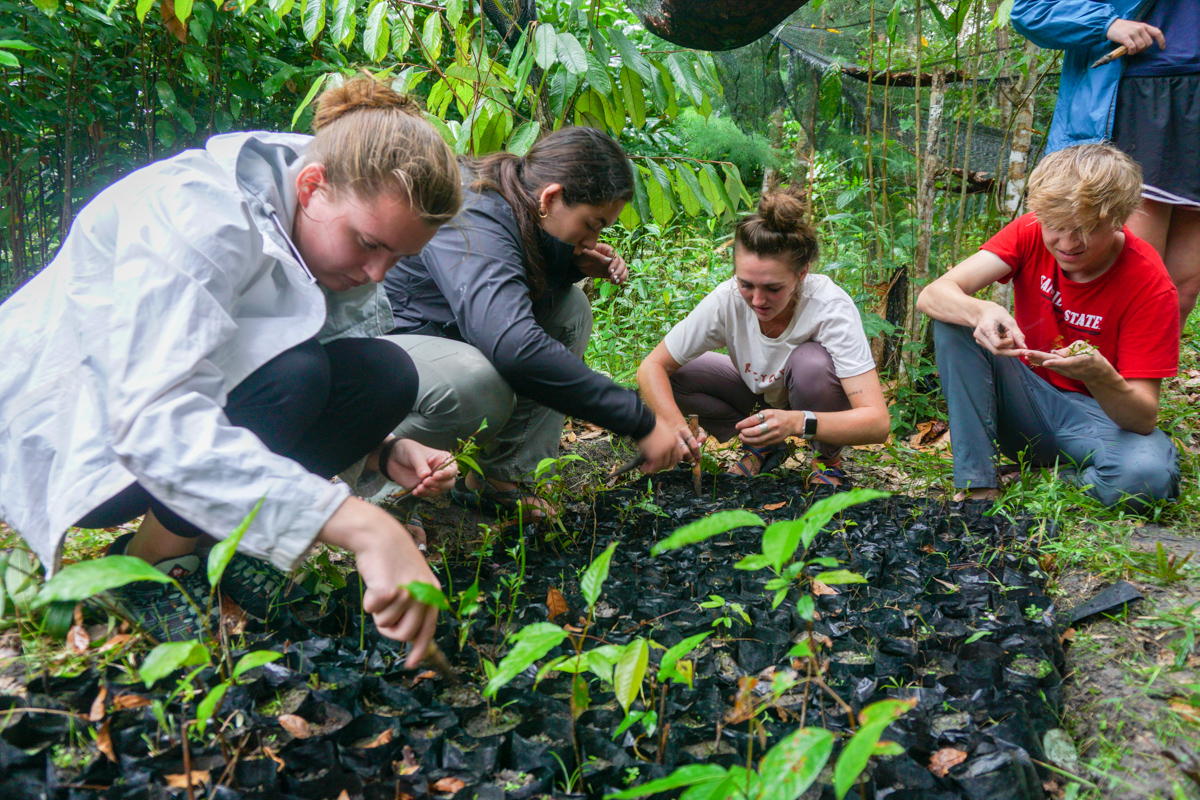
During this section of the trip I also decided that Kalimantan was a great research location for my independant research project. I wanted to do something conservation related and I have a personal interest in entomology, so I decided that I would do a population analysis of terrestrial arthropods in the area and look for trends between population size, biodiversity, and anthropogenic impact to determine the value of insects as indicator species.
I had seven locations (ex-gold mining site, palm oil plantation, river, reforestation site, volunteer housing, secondary forest, primary forest) that I installed pitfall traps at. After letting the traps sit for a day, I went and collected all of the specimens and moved on to the very long and very tedious process of species identification.
For this part of my project, I used my macro camera and a millimeter ruler to take ventral, dorsal, and lateral pictures of each species while keeping track of the number of individuals from each. Because of the remote location, I didn’t have forceps and instead had to use a pair of porcupine quills to position them. This took a good amount of time, during which I was getting eaten alive by mosquitos, but by the end I had ~100 good quality photos.
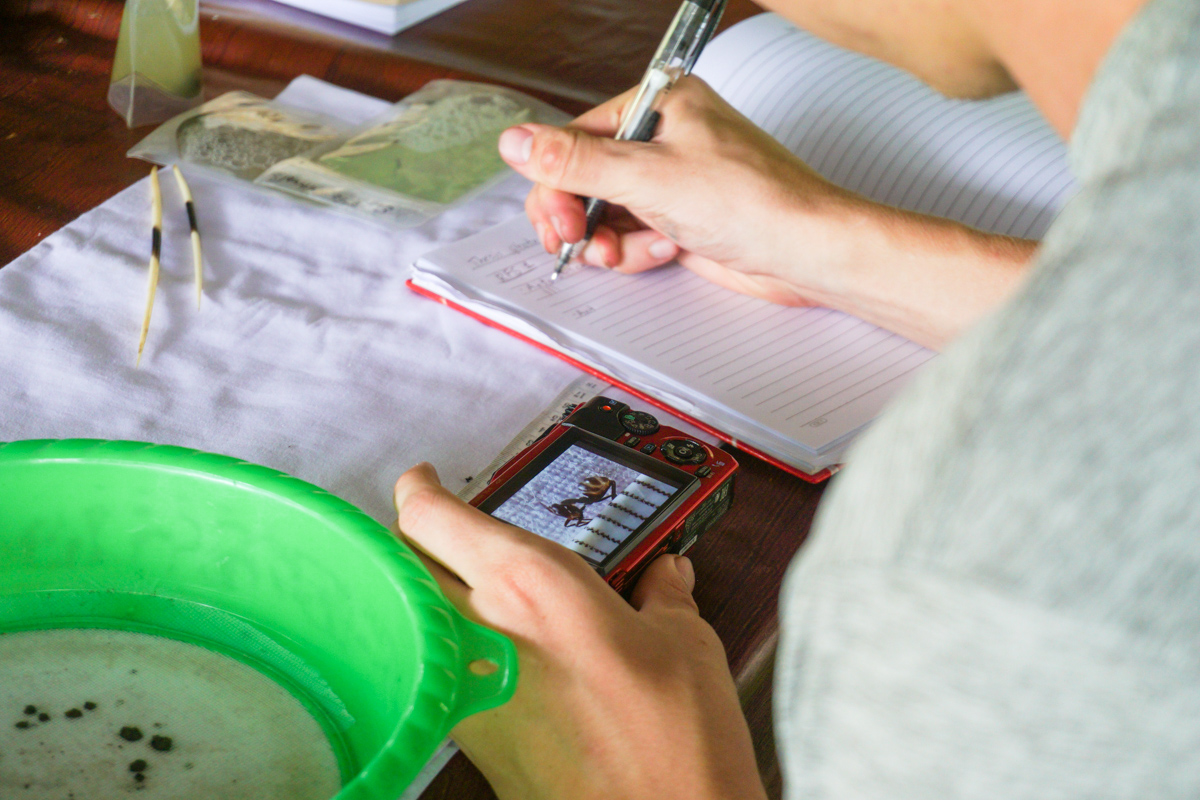
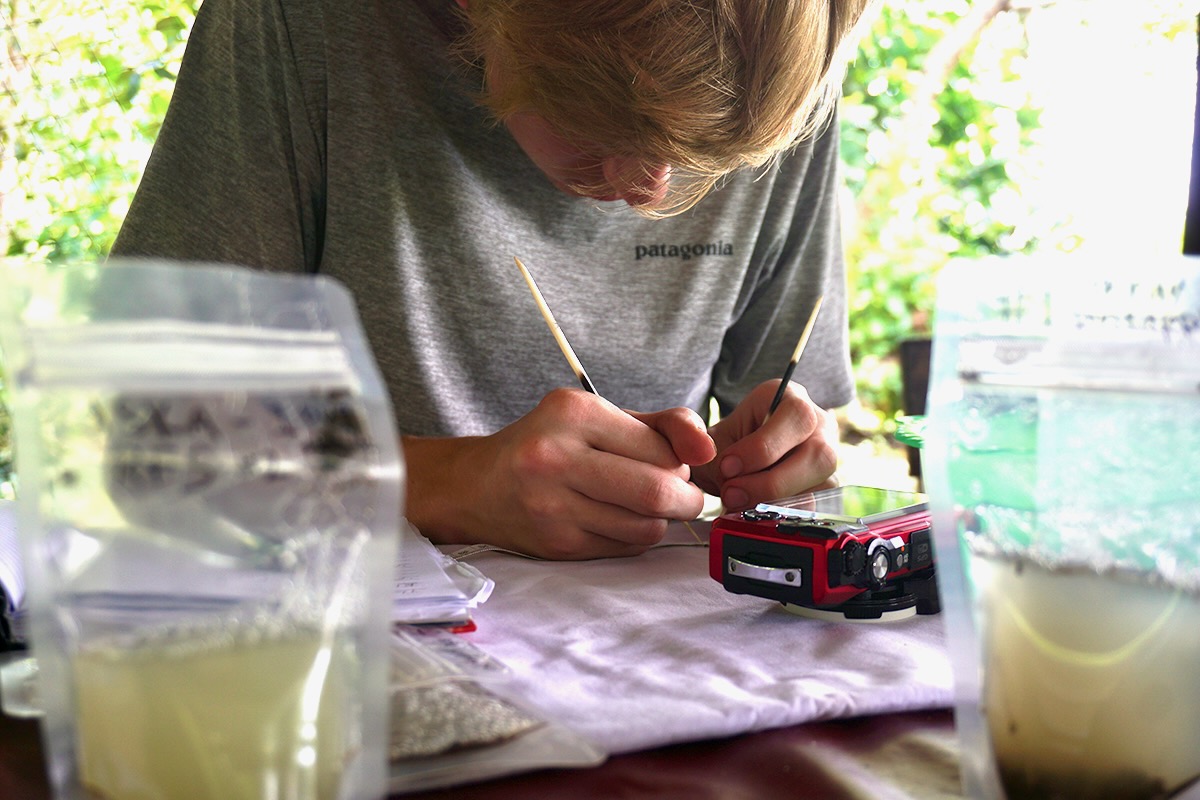
Following our forestry and primate section, we travelled to a small island off the coast of Bali called Nusa Lembongan. Here we worked with a marine biologist from Australia who has been doing reef conservation in the area for twelve years. A major issue in the area is physical damage to reef structures from boat docking. This creates an unstable environment that makes it much harder for coral to develop in the area.
After a few lectures on ocean science and coral biology, we helped make and prepare several tent-shaped rebar structures that act as a stable site for corals to grow on. The next day we snorkelled at their coral nursery to collect fragments to attach to our structures. After this, we installed our structures on sites deemed suitable for the species we collected.
Nusa Lembongan also has a local population of manta rays, so the next portion of our marine conservation section was dedicated to their biology and conservation. After our lectures we took a boat out to Manta Bay where we got to snorkel with 3 juvenile manta rays, one of which was a rare all-black manta.
No pictures or videos could ever do this snorkelling trip justice, and its even harder to convey through words. Seeing these incredible creatures swim over a thriving reef teeming with countless species is something I’ll never forget. We finished this trip up around 1:00 PM and had the rest of the day off. We always love having an afternoon just to lay around the beach and relax, but this one was particularly appreciated because it was also my birthday. I’ve heard 21st birthdays are pretty great, but I think I’m going to have a hard time topping this one.
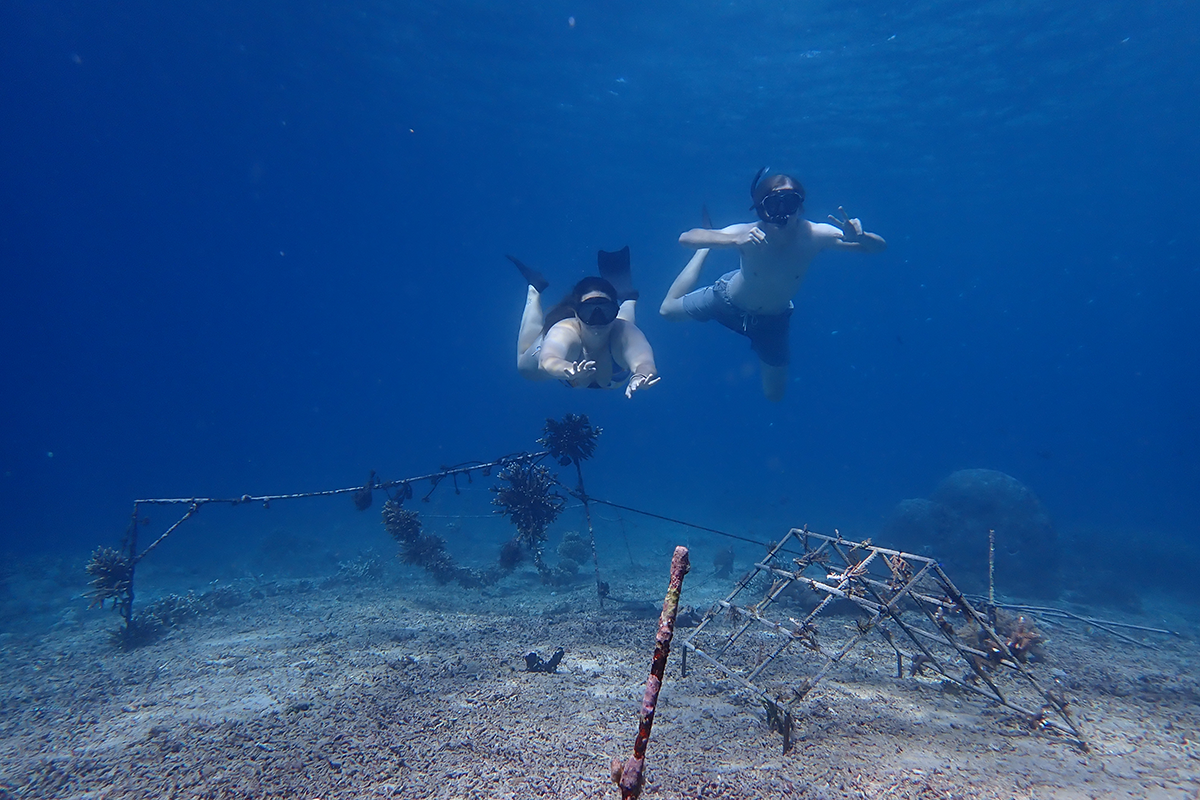
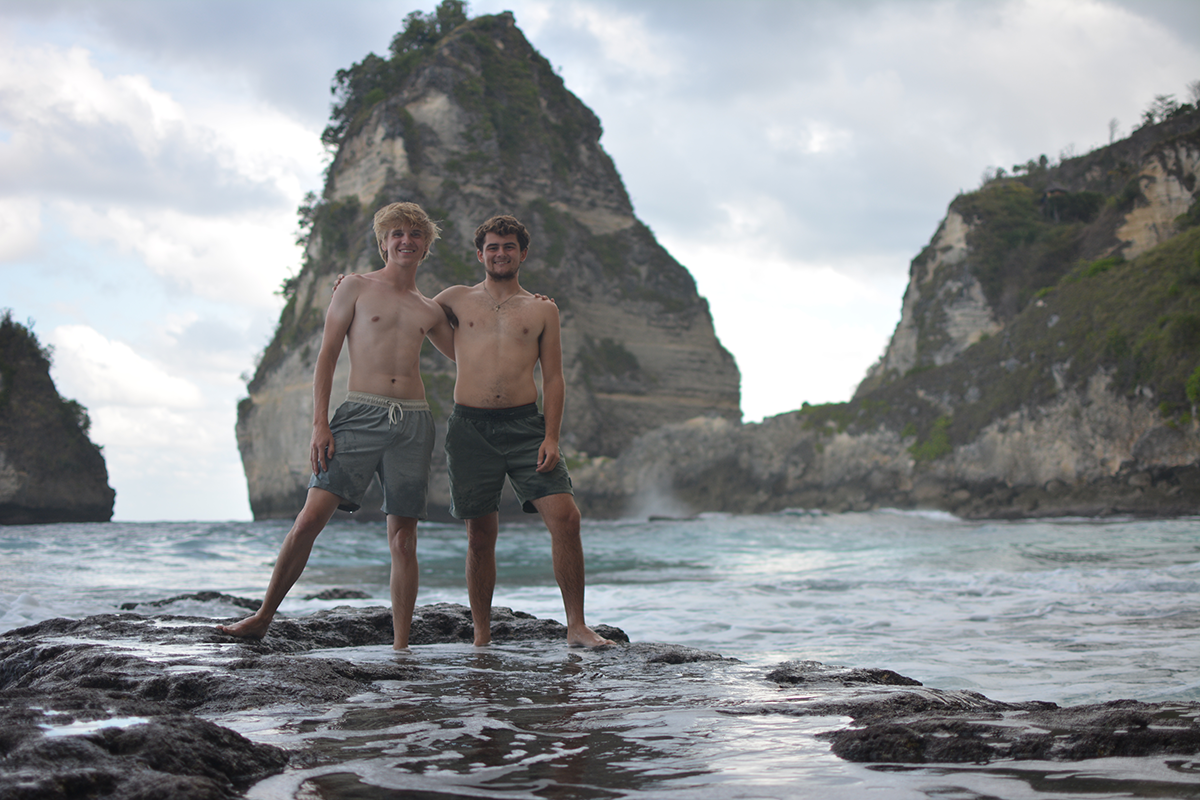
I’ve been on a lot of great hikes on this trip, but by far my favorite was when we climbed a volcano in Java called Kawah Ijen. Ijen is incredibly rich with sulfur, so much so that any fire that forms from the volcano’s immense heat burns blue, a phenomenon that only occurs in two places in the world. In order to see this blue fire, you have to make it to the inside of the crater while its still dark. To accomplish this, we had to wake up at 1:00 AM to make it to the Ijen basecamp by 2:00 AM to gear up.
Hiking up Ijen is pretty difficult due to it being dark and incredibly steep, and hiking down into the crater is no easier. Due to the sulfur concentration, once you get over the ledge you have to put on a gas mask to breathe. After about four hours of hiking, we finally reached the lowest point and saw the blue flames spewing from a heat vent. Although the fire was incredible, I was a bit distracted by the fact we had to repeat the already challenging hike back up, but this time in gas masks.
Somehow we managed to make it back up to the ridge of the crater just in time to have the breakfast we had brought with the best sunrise I’ve ever seen. As the sun came up, we were able to see all the details that were lost to us in the night. One that we had walked along without even noticing was a lake about 1000 feet down in the crater. The lake is an unbelievably bright teal color painted with yellow streaks due to the high concentration of sulfuric acid within it, such a high concentration that the pH of the water is only .3.
This trip has taught me so much about both the biological and political elements of conservation that will surely serve as a framework for my time back home in class and in the lab.
Although I was already planning on going to graduate school for biology before this trip, my experiences here, both the highs and lows, have really solidified in my mind that I’m on the right path.
